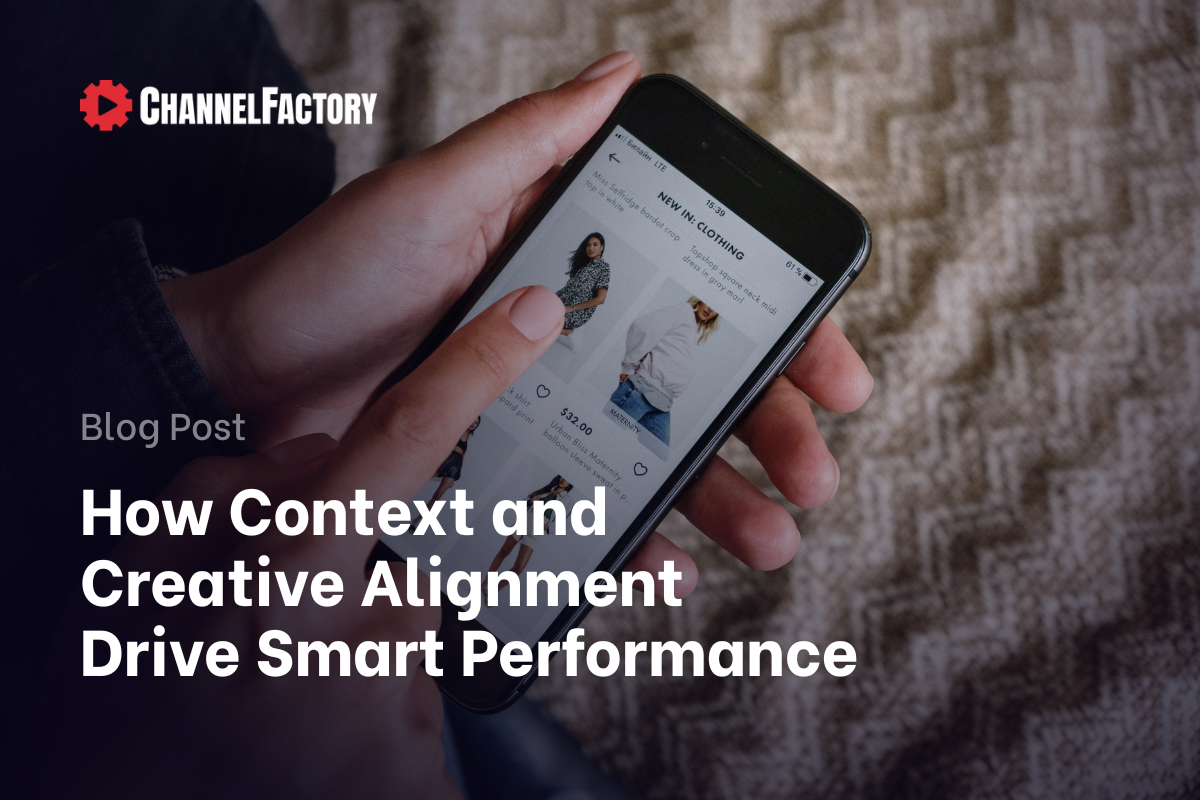August 8, 2025

The performance conversation hasn’t gone away, but it has evolved. Media fragmentation, shifting consumer behavior, and rising scrutiny around where ads appear are all putting pressure on what used to be simple: get results, fast. But what counts as a result today? And at what cost? This issue unpacks the shift from siloed, short-term metrics to brand-aligned performance that actually holds up—inside the dashboard and out in the real world.
Stats that show why context, brand fit, and creative alignment are now performance drivers:
Only 6% of marketers say they have fully integrated brand and performance teams. Source: WARC x MMA Global (2023)
82% of consumers say they prefer to see ads about the same topic as the video they are watching. Source: Connatix
50 % higher click-through rates observed for contextual vs. non-contextual ads ( Source: Multiview
Ads gain a 16% lift in engagement when placed alongside relevant content. Source: Multiview
Clicks aren’t credibility. Reach isn’t resonance. It’s time to rethink what performance really means.
Performance marketing has long promised one thing above all else: results. Clicks, views, leads, conversions—the immediate, measurable indicators of success. And for a long time, that was enough. But as digital behaviors evolve and platforms blur the lines between awareness and action, those single-metric KPIs no longer tell the full story.
Consumers don’t follow neat funnels. They scroll, skip, research, and return. Their expectations have shifted, and their tolerance for irrelevant, disruptive, or poorly placed ads has narrowed. Yet many performance strategies are still built on the assumption that what worked five years ago will work again with better bidding and marginally smarter targeting.
The truth is that the current model is under strain. Not because performance marketing doesn’t work, but because it’s still being measured in isolation, often at the expense of brand integrity, context, and long-term value.
Over the past decade, performance has been optimized to extremes. In the pursuit of lower costs and faster wins, advertisers have accepted trade-offs—sometimes knowingly, often by default. Tone, placement, relevance, creative context: these factors have been deprioritized in favor of what delivers a result on the dashboard.
But attention today is not a given, and the environment matters more than ever. Great creative, placed in the wrong context, doesn’t just underperform. It undermines the brand behind it. That’s the real performance problem: when strategy is driven by efficiency alone, we risk disconnecting from the very audiences we’re trying to reach.
The most progressive marketers are starting to recalibrate. They’re not abandoning performance KPIs, but reframing them. They’re asking harder questions about how performance is delivered, not just what the numbers say.
For performance to work today, it has to be aligned—with the brand, with the creative, and with the environment in which it lands. That’s where the disconnect often appears. Brand and performance teams remain siloed. Media is planned and optimized in fragments. Messaging gets repurposed rather than rethought. The result is often a fractured customer experience and missed opportunities to build cumulative impact across the funnel.
What’s needed isn’t a wholesale reinvention but a reset in how we define effectiveness. Success should be measured not just by conversions, but by what those conversions cost, what they contributed to long-term brand equity, and how they aligned with broader strategic objectives.
We see this shift playing out in real campaigns. The most effective advertisers are starting with context and creative suitability, not treating them as afterthoughts. They’re building plans that are sequenced and audience-aware, not channel-locked. And they’re using tools and platforms, such as our latest solution Elev8, that allow them to integrate brand safety and contextual intelligence into performance media from the start.
This isn’t about compromise. It’s about coherence.
Performance marketing is not going away. But the version that chases low-cost results in isolation, regardless of where or how those results are achieved, is increasingly unfit for purpose. Today’s media environment demands more: more relevance, more consistency, and more alignment between what a brand says and where it says it.
This is the shift: from performance at any cost, to performance that builds as well as converts.
Because if your performance strategy doesn’t support your brand, it begs the question: is it really performing at all?
How to rethink performance without breaking your funnel
Start with brand fit, not just bid strategy. Don’t sacrifice long-term value for short-term efficiency. Align your media placements with your creative tone and brand values from the start.
Build for sequencing, not just silos. Treat every asset as part of a journey. Full-funnel performance happens when messaging builds across formats, not when teams compete for attribution.
Use context as a targeting signal. Platforms are increasingly signal-poor. Context is the next-best indicator of intent and mindset and it’s privacy-resilient.
Reframe success. Layer performance KPIs with indicators of brand lift, attention, and environment quality. Clicks don’t tell you why something worked.
Supercharge your full-funnel strategy with lead generation in walled gardens. From YouTube to Meta, generate guaranteed leads in contextually relevant, brand-suitable environments. Get started today.